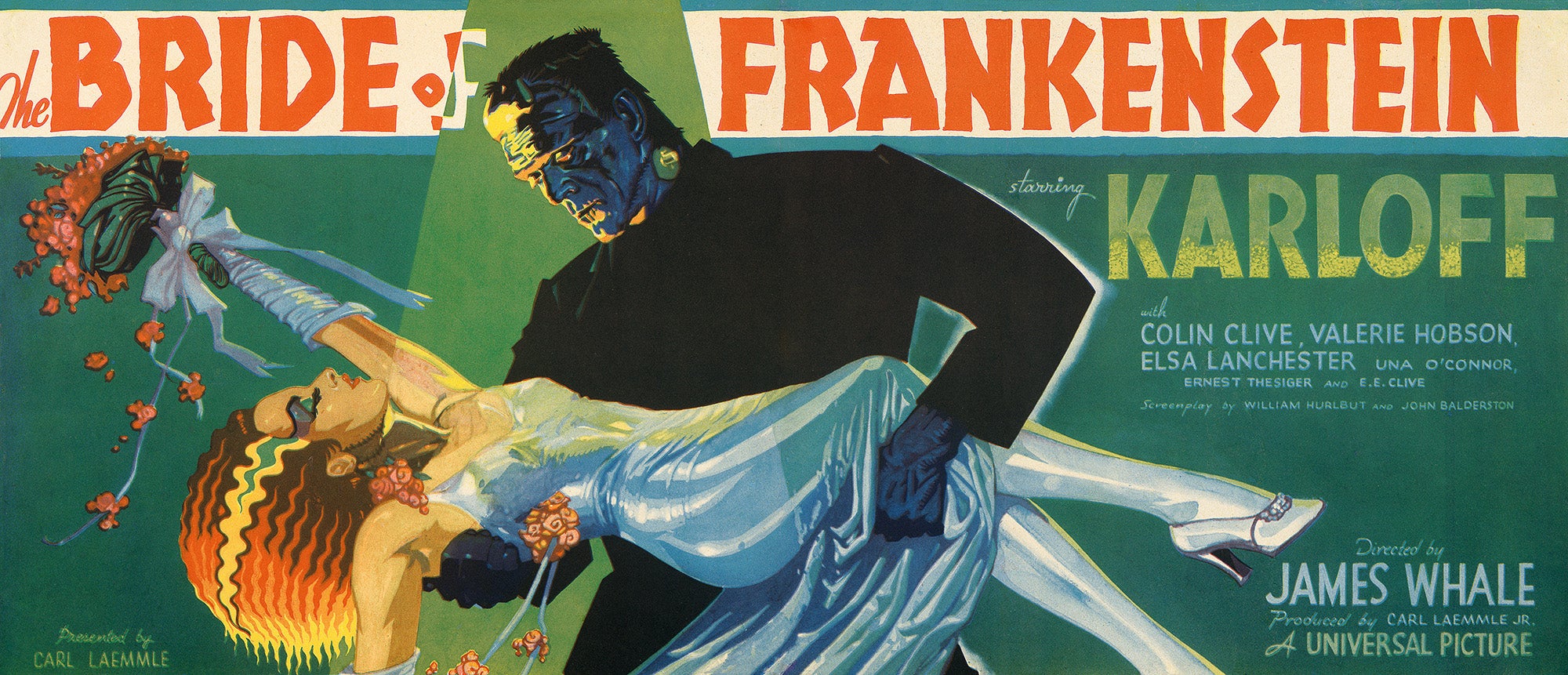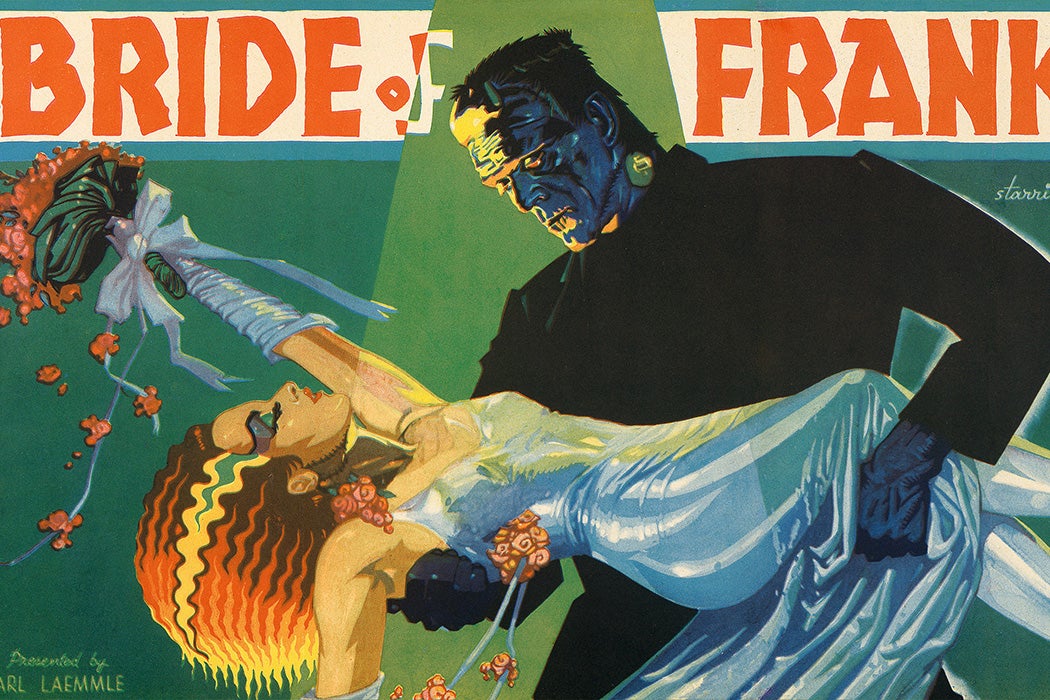There’s a good reason we all reach for Frankenstein around this time of year (or, frankly, whenever we need a good, crackly thrill): it’s a heck of a story, and there’s seemingly a version for every possible moment and mood. Mary Shelley’s original novel is, of course, a first-rate choice. But since 1910, when a silent version was produced by Thomas Edison’s studios, directors have retold the story through dozens upon dozens of films. (There’s no end in sight to Frankenstein’s enduring screen popularity, either: this month alone, the Turkish series Creature debuted on Netflix, and director Guillermo del Toro announced the cast for his upcoming version of the tale.)
Perhaps the most impressive part of Frankenstein’s cinematic life is its evergreen nature. The story has a knack for speaking to creativity, disability, monstrosity, and concepts of both beauty and masculinity in any given era or societal milieu. This makes sense when you consider horror movies as a sort of modern mythology, in which recurring archetypes can easily be leveraged and re-deployed.
Director James Whale worked within a dense period of horror movie development that anthropologists and horror movie buffs Simon Coleman and Matthew Johnson connect with Universal Films between 1931 and 1948. Stars including Boris Karloff, Bela Lugosi, and Lon Chaney not only played iconic monsters (Frankenstein, Dracula, and the Wolfman, respectively), but they recombined themselves and the movie plots to create (sometimes literal) progeny such as Dracula’s Daughter, Frankenstein Meets the Wolfman, and, unforgettably, Abbott and Costello Meet Frankenstein. These seemingly trivial films used monstrosity and otherness to explore collective anxiety, new media, and all sorts of social binaries held in tension (life and death, science and nature, male and female, attraction and revulsion). Frankenstein films have even used analyzed as a gauge of mass fear around polio and to address the rhetoric of environmental crisis.
In this proliferation of films, the “Bride of Frankenstein” in particular has become as recognizable as a means of discussing social issues and popular culture as her male partner; she’s become, as communications scholar Erin Hawley writes, “a creature of cultural memory, as visible between texts as she is within them.”
The concept of a female monster is drawn from Shelley’s story, to be sure, but in the novel the character is an unfulfilled concept. As written, scientist Victor Frankenstein’s creature demands a partner like himself, and Victor begins to fulfill the request. Horrified by his work, however, he ultimately dismembers the body and throws its parts into the sea.

Shelley returned the idea of a female creature to feminine nature, keeping her novel focused on the dialogue between men, dominion, technology, and science. She considered female monstrosity an issue for another day (or, perhaps, one of no interest to her). James Whale wanted to take it on, though, following the success of his 1931 Frankenstein film starring Boris Karloff. For the 1935 sequel Bride of Frankenstein, he set up an introductory vignette in which Mary Shelley herself (played by Elsa Lanchester, the same actress who would play the Bride) tells Percy Shelley and Lord Byron over her rainy-day needlepointing that there’s in fact still more of her famous tale to tell.
Despite the publicity and fanfare around the movie’s title character, the Bride only appears at the end of the film, in a creation scene that mirrors Whale’s 1931 original (right down to the shouts of “she’s alive!”). As the Bride, Lancaster is tall and angular, wearing a long, white gown and sporting her now-signature lightning-striped hairdo. She is, like the original creature, scarred—but carefully so, along her jawline as if to emphasize how sharply gorgeous its lines are. The Bride doesn’t speak, and when, hissing, she rejects the Creature as her partner, he blows up the castle with the two of them inside.
Noel Carroll, writing in Film Quarterly, reminds readers that “[t]he fantastic beings of horror films can be seen as symbolic formations that organize conflicting themes into figures that are simultaneously attractive and repulsive.” Elsa Lanchester recalled in an interview with Dick Cavett that Whale’s character advice consisted of a single line, in much the same spirit: “Inside you pretty girls, there is the devil.”
The Bride is a fundamentally visual, cinematic creation—never fully realized by Shelley in print, she came to life, wordless, at the movies. Hawley writes that
this under-theme of visuality becomes more urgent when the monster is female: she/it is positioned as an object to be gazed upon and thus worked into cinematic narratives of desire, whereby the female body is subjected to the male gaze.
In Young Frankenstein (1974), Mel Brooks lampoons the idea of the objectified Bride by turning Dr. Frederick Frankenstein’s prim fiancée, Elizabeth, into a saucy sexpot in a beehive wig (played by Madeline Kahn). Film and literary critic James Heffernan points out that much of the film reads as “sophomoric pranks,” but that the hijinks have “quite a lot to do with one of the myths lurking just beneath the surface of [Shelley’s] plot, the myth of Beauty and the Beast.” The monster’s marriage to Elizabeth may be “wacky,” but “it also points directly to the sexual energies that Mary Shelley’s Victor so perversely thwarts in himself and the monster alike.”
Weekly Newsletter
Elizabeth’s transformation is of a piece with the universe of Frankenstein stories, particularly ones about women, that have spun off from Shelley’s initial setup to reflect and reckon with their moment in culture. In “Here Comes the Bride,” literature and film scholar Elizabeth Young takes a more sober look at the Bride’s construction as a “creature of male fantasy.” Applying a sort of Bechdel Test to the film, she concludes that it “repeatedly stages gender as a disappearing act, whereby once two men are together, the lady vanishes.”
But the Bride refuses to vanish. She has, appropriately enough, come to life from Shelley’s dead material to join the horror-myth pantheon. Freed from the original text, she continues to explore liminality, femininity, and monstrosity as a character in movies like The Bride (1985) and Mary Shelley’s Frankenstein (1994) or as an allusion to or inspiration for pop culture properties ranging from the Hotel Transylvania movie series to Gary Larson’s The Far Side cartoons, Showtime’s Penny Dreadful to The Rocky Horror Picture Show.







